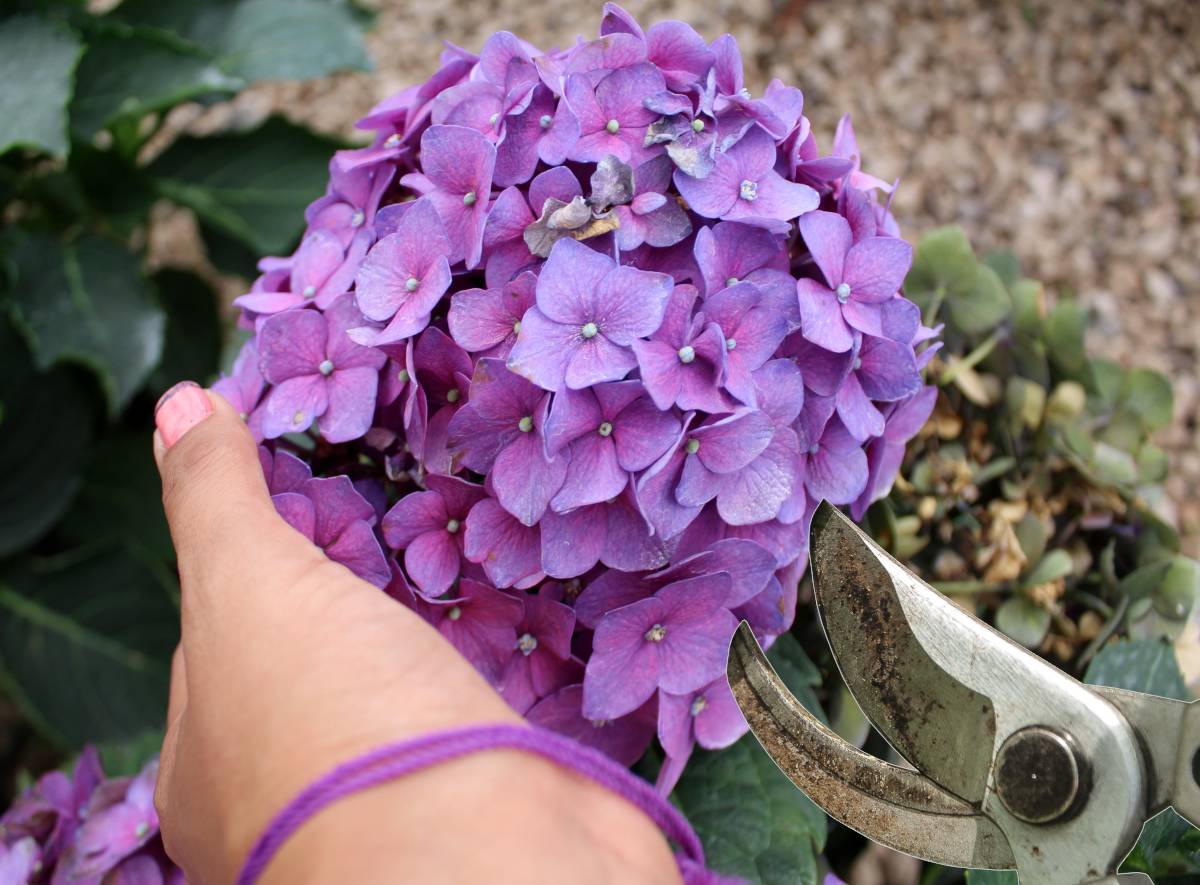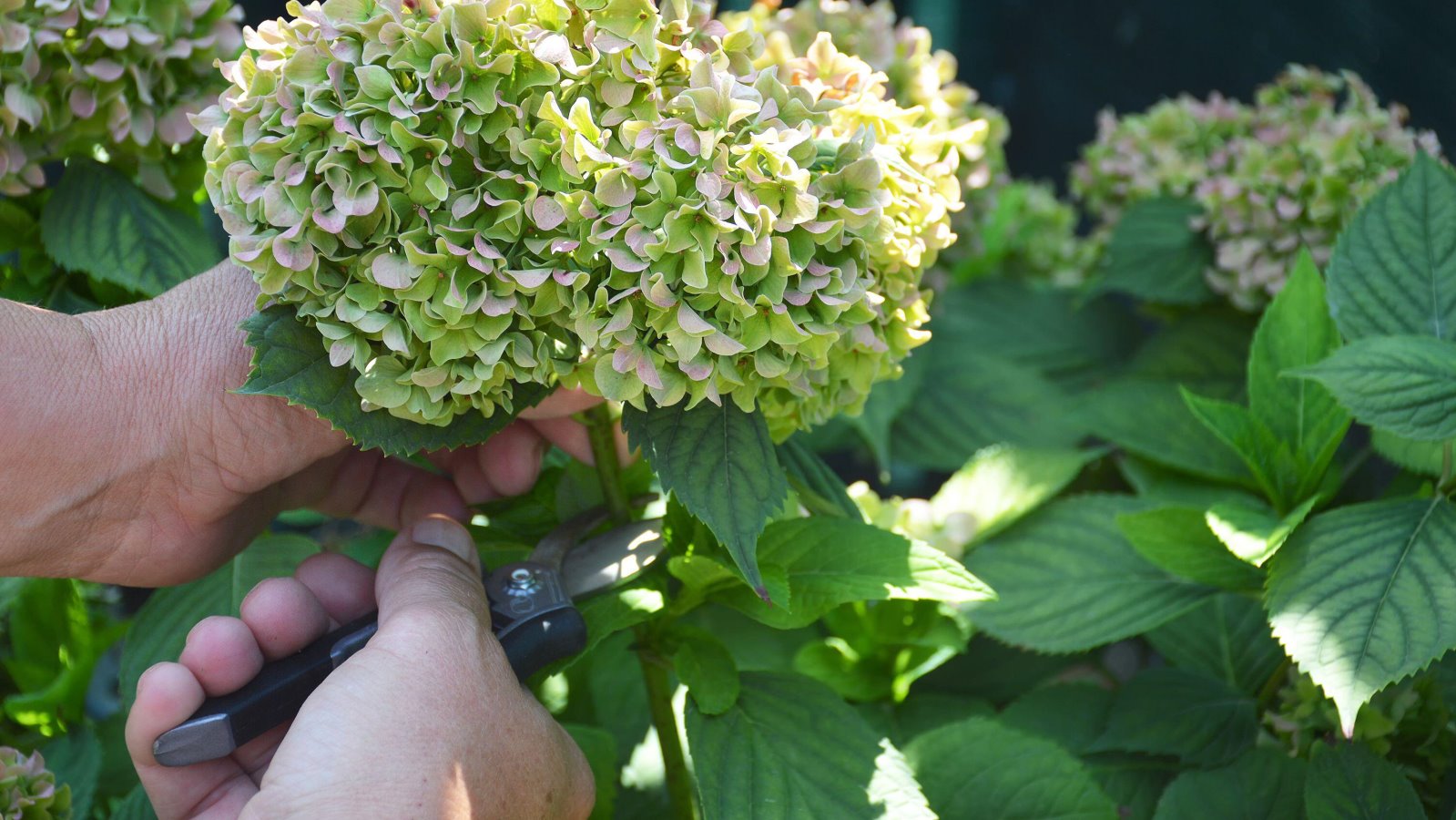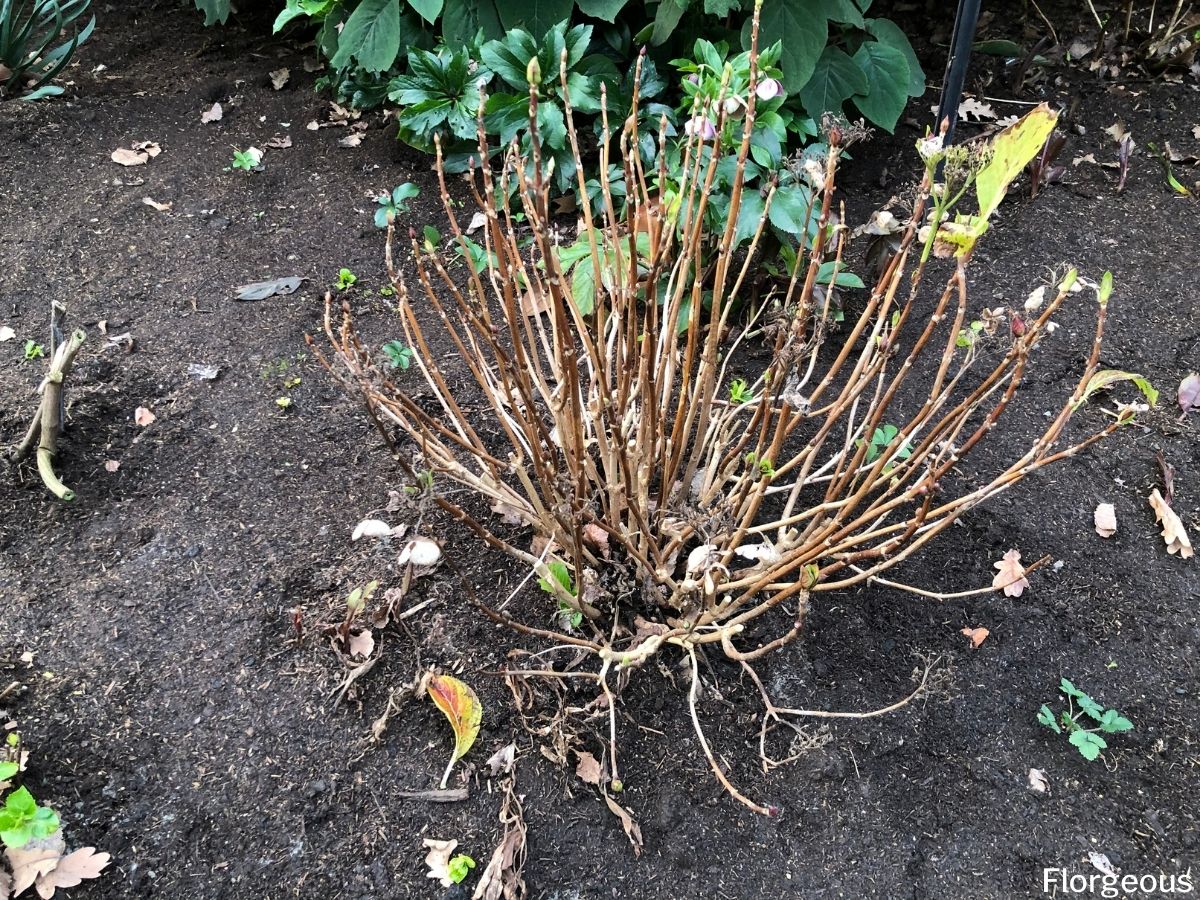Understanding the Best Time to Prune Your Hydrangeas
Pruning hydrangeas is an essential part of their maintenance, and timing is crucial to promote healthy growth and maximize blooms. The question of when to prune hydrangeas is a common one, and the answer depends on the type of hydrangea and its growth stage. Pruning at the wrong time can lead to reduced flowering or even kill the plant, so it’s essential to understand the best time to prune your hydrangeas.
Hydrangeas are sensitive to pruning, and cutting them at the wrong time can cause stress to the plant. This stress can lead to a decrease in blooms, and in severe cases, it can even kill the plant. On the other hand, pruning at the right time can encourage healthy growth, promote blooms, and help maintain the plant’s shape and size.
So, when can you cut hydrangeas? The answer is not straightforward, as it depends on the type of hydrangea and its growth stage. Generally, the best time to prune hydrangeas is during their dormant season, which typically occurs in late winter or early spring. However, some types of hydrangeas, such as bigleaf hydrangeas, require pruning immediately after they finish blooming.
It’s also important to note that pruning hydrangeas is not just about cutting them back; it’s also about shaping and training the plant to promote healthy growth and maximize blooms. By understanding the best time to prune your hydrangeas and using the right pruning techniques, you can encourage your hydrangeas to thrive and produce beautiful blooms.
In the next section, we’ll discuss how to identify the right pruning time for your hydrangea variety, including tips on how to identify the type of hydrangea you have and when to prune it.
How to Identify the Right Pruning Time for Your Hydrangea Variety
Hydrangeas come in several varieties, each with its unique pruning requirements. To determine the best time to prune your hydrangea, it’s essential to identify the type of hydrangea you have. The four main types of hydrangeas are bigleaf, panicle, smooth, and oakleaf.
Bigleaf hydrangeas (Hydrangea macrophylla) are the most common type and require pruning immediately after they finish blooming. This is usually in late summer or early fall. Pruning bigleaf hydrangeas at the wrong time can reduce flowering, so it’s crucial to prune them at the right time.
Panicle hydrangeas (Hydrangea paniculata) and smooth hydrangeas (Hydrangea arborescens) can be pruned in late winter or early spring, before new growth begins. These types of hydrangeas produce flowers on new wood, so pruning them in late winter or early spring will not affect flowering.
Oakleaf hydrangeas (Hydrangea quercifolia) are a bit more sensitive and require pruning in late winter or early spring, but only if necessary. Oakleaf hydrangeas produce flowers on old wood, so pruning them too much can reduce flowering.
To identify the type of hydrangea you have, look at the shape and size of the leaves, the color and shape of the flowers, and the overall growth habit of the plant. You can also consult with a local nursery or gardening expert if you’re unsure.
Once you’ve identified the type of hydrangea you have, you can determine the best time to prune it. Remember to prune your hydrangea at the right time to promote healthy growth and maximize blooms. In the next section, we’ll discuss the role of dormancy in hydrangea pruning and how to check if your hydrangea is dormant.
The Role of Dormancy in Hydrangea Pruning
Dormancy plays a crucial role in hydrangea pruning, as it affects the timing and technique of pruning. Hydrangeas typically enter dormancy in late fall or early winter, and remain dormant until early spring. During this period, the plant’s growth slows down, and it becomes less sensitive to pruning.
To check if your hydrangea is dormant, look for the following signs: the leaves have fallen off, the stems are bare, and the plant is not producing new growth. You can also perform a simple scratch test by gently scratching the bark of the stem with your fingernail. If the underlying tissue is green, the plant is still active and not yet dormant.
Pruning hydrangeas during dormancy is generally recommended, as it allows the plant to heal quickly and reduces the risk of disease and pests. However, it’s essential to prune hydrangeas at the right time during dormancy, as pruning too early or too late can cause damage to the plant.
When pruning hydrangeas during dormancy, make clean cuts just above a growth node, and remove any dead, diseased, or damaged wood. This will help promote healthy growth and encourage new blooms. It’s also essential to prune hydrangeas in a way that maintains their natural shape and promotes good air circulation.
Some hydrangea varieties, such as bigleaf hydrangeas, require pruning immediately after they finish blooming, while others, like panicle hydrangeas, can be pruned in late winter or early spring. Understanding the role of dormancy in hydrangea pruning will help you determine the best time to prune your hydrangea and ensure optimal blooms.
In the next section, we’ll discuss pruning techniques for different hydrangea growth stages, including pruning for shape, size, and promoting blooms.
Pruning Techniques for Different Hydrangea Growth Stages
Pruning hydrangeas at different growth stages requires different techniques to promote healthy growth and maximize blooms. Here are some step-by-step instructions on how to prune hydrangeas at different growth stages:
Pruning for Shape: To prune hydrangeas for shape, remove any dead, diseased, or damaged wood, and cut back any overgrown branches to maintain the plant’s natural shape. Make clean cuts just above a growth node, and remove any weak or spindly growth.
Pruning for Size: To prune hydrangeas for size, cut back the stems to the desired height, making sure to leave at least two sets of leaves on each stem. This will help control the plant’s size and promote healthy growth.
Pruning for Blooms: To prune hydrangeas for blooms, remove any dead or damaged flowers, and cut back the stems to encourage new growth and promote blooming. Make clean cuts just above a growth node, and remove any weak or spindly growth.
Pruning in the Spring: In the spring, prune hydrangeas to remove any dead or damaged wood, and cut back any overgrown branches to maintain the plant’s natural shape. This will help promote healthy growth and maximize blooms.
Pruning in the Summer: In the summer, prune hydrangeas to remove any dead or damaged flowers, and cut back the stems to encourage new growth and promote blooming. Make clean cuts just above a growth node, and remove any weak or spindly growth.
By pruning hydrangeas at different growth stages, you can promote healthy growth, maximize blooms, and maintain the plant’s natural shape. Remember to always make clean cuts, and remove any dead, diseased, or damaged wood to prevent the spread of disease.
In the next section, we’ll discuss common mistakes to avoid when pruning hydrangeas, and provide tips on how to avoid them.
Common Mistakes to Avoid When Pruning Hydrangeas
Pruning hydrangeas can be a delicate process, and making mistakes can lead to reduced blooms, dieback, or even kill the plant. Here are some common mistakes to avoid when pruning hydrangeas:
Pruning too much: Pruning too much of the plant can cause stress, leading to reduced blooms or dieback. It’s essential to prune only what is necessary to maintain the plant’s shape and promote healthy growth.
Pruning too little: On the other hand, pruning too little can lead to overgrowth, which can reduce blooms and make the plant look unkempt. Regular pruning is necessary to maintain the plant’s shape and promote healthy growth.
Pruning at the wrong time: Pruning hydrangeas at the wrong time can lead to reduced blooms or dieback. It’s essential to prune hydrangeas at the right time, depending on the variety and growth stage.
Not making clean cuts: Making clean cuts is essential when pruning hydrangeas. Cutting too close to the node or leaving stubs can lead to disease and pests.
Not removing dead or damaged wood: Failing to remove dead or damaged wood can lead to the spread of disease and pests. It’s essential to remove any dead or damaged wood when pruning hydrangeas.
By avoiding these common mistakes, you can ensure that your hydrangeas receive the best care and produce optimal blooms. In the next section, we’ll discuss post-pruning care for hydrangeas, including watering, fertilizing, and mulching.
Post-Pruning Care for Hydrangeas
After pruning your hydrangea, it’s essential to provide the right care to help it recover and promote healthy growth. Here are some tips on post-pruning care for hydrangeas:
Watering: Hydrangeas need consistent moisture, especially after pruning. Water your hydrangea regularly, but make sure not to overwater, which can lead to root rot and other problems.
Fertilizing: Fertilizing your hydrangea after pruning can help promote healthy growth and blooming. Use a balanced fertilizer that is high in phosphorus, which promotes blooming.
Mulching: Mulching around the base of your hydrangea can help retain moisture, suppress weeds, and regulate soil temperature. Use a layer of organic mulch, such as wood chips or bark, around 2-3 inches thick.
Monitoring for Pests and Diseases: After pruning, it’s essential to monitor your hydrangea for pests and diseases. Keep an eye out for signs of infestation or infection, and take action promptly if you notice any problems.
By providing the right post-pruning care, you can help your hydrangea recover from pruning and promote healthy growth and blooming. In the next section, we’ll discuss how to prune hydrangeas for specific purposes, such as pruning for cut flowers or pruning to control size.
Pruning Hydrangeas for Specific Purposes
Hydrangeas can be pruned for specific purposes, such as pruning for cut flowers, pruning to control size, or pruning to rejuvenate an old plant. Here are some tips on how to prune hydrangeas for specific purposes:
Pruning for Cut Flowers: If you want to use your hydrangeas as cut flowers, prune them in the spring to encourage new growth and promote blooming. Cut back the stems to about 12-18 inches from the ground, and remove any dead or damaged wood.
Pruning to Control Size: If you want to control the size of your hydrangea, prune it in the spring or fall to reduce its height and width. Cut back the stems to the desired height, and remove any dead or damaged wood.
Pruning to Rejuvenate an Old Plant: If you have an old hydrangea that is no longer producing blooms, prune it in the spring to rejuvenate it. Cut back the stems to about 12-18 inches from the ground, and remove any dead or damaged wood. This will help promote new growth and encourage blooming.
By pruning your hydrangea for specific purposes, you can encourage healthy growth, promote blooming, and control its size. In the next section, we’ll discuss troubleshooting common hydrangea pruning problems, such as reduced blooms or dieback, and offer tips on how to prevent them in the future.
Troubleshooting Common Hydrangea Pruning Problems
After pruning your hydrangea, you may encounter some common problems, such as reduced blooms or dieback. Here are some solutions to these problems and tips on how to prevent them in the future:
Reduced Blooms: If you notice that your hydrangea is not producing as many blooms as it used to, it may be due to over-pruning or pruning at the wrong time. To prevent this, make sure to prune your hydrangea at the right time and avoid over-pruning.
Dieback: Dieback is a common problem that can occur after pruning hydrangeas. It is caused by the plant’s inability to heal quickly from pruning wounds. To prevent dieback, make sure to make clean cuts and remove any dead or damaged wood.
Leaf Scorch: Leaf scorch is a common problem that can occur after pruning hydrangeas. It is caused by the plant’s leaves being exposed to too much sunlight. To prevent leaf scorch, make sure to provide your hydrangea with adequate shade and water it regularly.
By following these tips and troubleshooting common problems, you can ensure that your hydrangea remains healthy and produces optimal blooms. Remember to always prune your hydrangea at the right time and avoid over-pruning to prevent common problems.







/GettyImages-135607253-574dbb633df78ccee12c5471.jpg)
